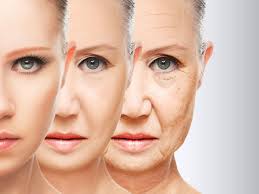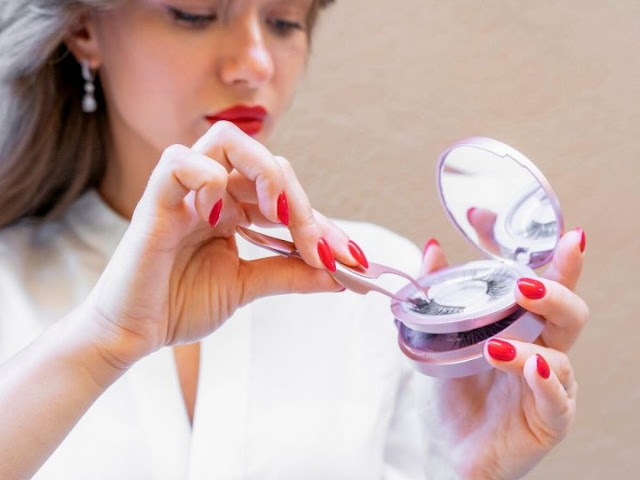Things To Try When Acne Won't Clear
Acne is a common skin disease that affects an estimated 85% of people at some point in their lives. Symptoms include pesky pimples that can be frustrating and difficult to get rid of. If this sounds like you, you’re not alone — acne isn’t strictly a teenaged plague. Adults can get it too, and women tend to have adult acne more than men, according to the American Academy of Dermatology.
Acne is a common skin disease that affects many people at some point in their lives . Symptoms include pesky pimples that can be frustrating and difficult to get rid of. While conventional treatments can get rid of pimples, they’re often associated with adverse effects, such as skin irritation and dryness. As such, a lot of people have turned to natural alternatives to get rid of pimples fast. However, while there are a lot of natural acne remedies out there, only a handful are scientifically proven to help.
Why do You get Acne?
Pimples is an inflammatory skin problem caused by one or more of these things:
Hormonal fluctuations that cause the body to secret excess oil
Plugging of hair follicles
Acne severity can range from blackheads and whiteheads to cysts.
Bacterial infection that causes inflammation
Nearly 85 percent of people between the ages of 12 and 24 experience acne. Why some people have severe breakouts while others barely have a pimple is not entirely clear. But genetics and environmental influences clearly play a role.
Hormonal fluctuations that cause the body to secret excess oil
Plugging of hair follicles
Acne severity can range from blackheads and whiteheads to cysts.
Bacterial infection that causes inflammation
Nearly 85 percent of people between the ages of 12 and 24 experience acne. Why some people have severe breakouts while others barely have a pimple is not entirely clear. But genetics and environmental influences clearly play a role.
The Truth About Adult Acne
With millions of people affected by acne every year, the American Academy of Dermatology reports acne is the most prevalent skin condition in the United States, with many sufferers who are well past puberty. For those battling regular breakouts, studies show that acne isn’t purely a cosmetic issue, but can also contribute to poor self-esteem or depression. As an adult, there is no such thing as mild acne. Every pimple is an insult and lasts too long. Fortunately, between classic methods and continually emerging dermatological technology, it is possible to achieve clear skin.
Tips from Dermatologists Can Help Your Acne Gone
Keep your hands off your face!
All dermatologists agree that you should never, ever pick at your acne. It may seem tempting, but remember that once you've picked at an acne lesion, it will take longer to heal and is more likely to scar. Especially when trying to get rid of a pimple overnight. Whatever you do, don't pick your pimple before bed. When you are tired you will inevitably cause more harm than good." Trust dermatologist on this one.
All dermatologists agree that you should never, ever pick at your acne. It may seem tempting, but remember that once you've picked at an acne lesion, it will take longer to heal and is more likely to scar. Especially when trying to get rid of a pimple overnight. Whatever you do, don't pick your pimple before bed. When you are tired you will inevitably cause more harm than good." Trust dermatologist on this one.
Green Tea
Brew a bag of green tea and after a few minutes, remove from heat and let it cool. Once cold to touch, place on top of pimples. As an overnight remedy, dot brewed green tea over the pimple before sleeping. Its anti-inflammatory properties can reduce swelling and redness.
Black pepper:
This is an old remedy from granny's treasure trove. Mix some black pepper with water and apply it on the acne. Leave it on till it dries but be careful to keep away from your eyes. This may burn a bit so you can even add some soothing yogurt or few drops of rose water to this mix.
Lemon:
This is the easiest remedy for forehead acne. Apply some lime juice directly on the acne and leave it on for 5 minutes. It might burn a bit but it is very effective in clearing the acne.
Give an acne treatment at least four weeks to work.
Using a new acne product every few days may seem useful, but that approach can worsen acne. Acne treatment needs time to work. Using a different product every few days can also irritate your skin, causing new breakouts.
If a treatment works for you, you should notice some improvement in 4 to 6 weeks. It can take two to three months or longer to see clearing. If you notice improvement, keep using the treatment. Even when you see clearing, you'll want to keep using the acne treatment. This helps to prevent new breakouts.
Honey
A dab of honey can do wonders for pimple-ridden skin. Its antibacterial properties can reduce inflammation and encourage healing. Apply a drop or two on the affected area through the night and wash it off the next morning.
Tweak your diet.
While it's advised to be wary of at-home treatments, there are ways to get rid of pimples without products. Since acne is caused by a combination of genetics and your environment, factors such as hormonal fluctuations, stress, and diet can cause breakouts. Stick to a low sugar diet and avoid cow's milk and whey protein, as they can be known to exacerbate acne, and try to "minimize stress however you can, such as practices like meditation or yoga.
Wash Your Face With Acne Soap
Washing your face with regular soap isn't enough to make your breakouts better. The best face wash for acne is effective at removing oil and dirt, but still gentle enough to use regularly without over drying your skin. Look for topical acne medication ingredients salicylic acid and/or benzoyl peroxide in your face wash and use gentle, nonabrasive cleansing techniques.
Do ice the pimple.
One of the most effective ways to get rid of acne fast is also the cheapest. If you’re dealing with a swollen zit on your face that’s causing pain, reach for an ice cube. Wrap it in a thin cloth and set it on the offending spot for three to four minutes. Repeat throughout the day to relieve pain and temporarily reduce swelling.
Use skin care products and cosmetics that don’t cause acne.
These products are labeled. On the package, you may see one of the following:
Won't clog pores, Non-acnegenic, Non-comedogenic, Oil free
Because some of these skin care products may still cause pimples in a few people, you may need to try different products before you find ones that don't cause you to breakout.
Don't ignore your hair.
If you have oily hair, you may need to wash it more often than people who have dry hair. Keeping your hair clean and off of your face will help prevent breakouts on the forehead and face. Some hair products, including pomades and gels, may worsen pimples. So if you have acne on your forehead and tend to use a lot of hair product, consider avoiding it. Headbands that cover your forehead can encourage acne, too, by keeping sweat in place.
Ask Your Doctor About Acne Medications
If you have persistent pimples, you may want to ask your doctor about available prescriptions and whether they might be a good fit for you. There are several FDA-approved oral and topical medications on the market that could help improve your skin, such as minocycline, spironolactone, and isotretinoin. We'll discuss these prescription medications and more later on.
Prevent new pimples from forming
There are several causes of acne, some genetic, some environmental. According to doctor, here are the ones you should look out for: The root causes of teenage-onset acne include excess oil production, clogged pores, bacteria, and inflammation. Teenagers also experience hormonal fluctuations that can trigger acne. Stress and lifestyle contribute to acne.
Stress increases cortisol levels in the body, which increases inflammation in the skin and worsens acne. Clinical studies have shown that diet can exacerbate acne, especially high glycemic diets and dairy. If you notice a dietary trigger for your acne, I recommend avoiding these foods. Make sure to watch what you put on your face, as well as what you put into your body. Look for "oil-free" and "non-comedogenic labels the next time you're taking a romantic stroll through Sephora. And never ever sleep in your makeup.
What NOT to do to Get Rid of a Pimple
You can watch pimple popping videos on the internet to your heart’s content, but Dr. Khetarpal recommends against trying it in real life. “Any manipulation of a pimple can lead to more inflammation, which can increase the risk of scarring,” she explains. “And your hands are dirty, so you’re going to introduce more bacteria and potentially make it worse.” Your best bet is to spot treat the pimple with benzoyl peroxide and then leave it alone.
When to See a Dermatologist.
You should see a doctor when using OTC products isn’t improving your acne. Your doctor or a dermatologist can help with acne at any stage. Even mild acne can lead to scarring, and there’s no way to predict whether mild acne will progress to becoming more severe.
Summary
Acne are a common problem that can be frustrating to treat. Conventional treatments can cause redness, irritation, or dryness, and many natural alternatives just don’t seem to work. The home remedies listed in this blog are supported by some limited studies as the most effective, natural ways to reduce pimples.
Nevertheless, applying various essential oils, green tea, and aloe vera to the skin seems to be the quickest way to get rid of pimples, while supplements may require longer-term use according to some limited research. The remedies in this article might not work for everyone but could be worth a try.







